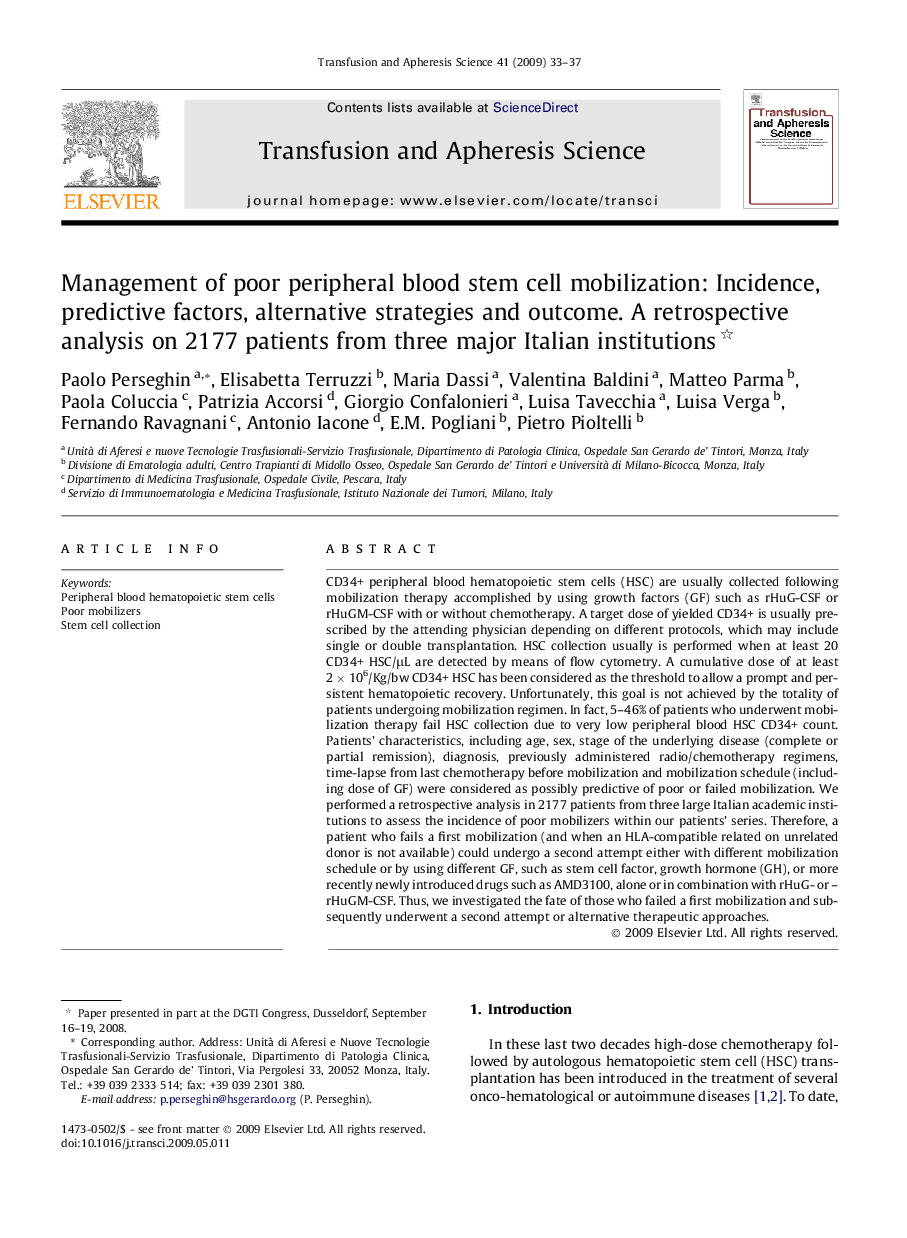| کد مقاله | کد نشریه | سال انتشار | مقاله انگلیسی | نسخه تمام متن |
|---|---|---|---|---|
| 3336116 | 1213558 | 2009 | 5 صفحه PDF | دانلود رایگان |

CD34+ peripheral blood hematopoietic stem cells (HSC) are usually collected following mobilization therapy accomplished by using growth factors (GF) such as rHuG-CSF or rHuGM-CSF with or without chemotherapy. A target dose of yielded CD34+ is usually prescribed by the attending physician depending on different protocols, which may include single or double transplantation. HSC collection usually is performed when at least 20 CD34+ HSC/μL are detected by means of flow cytometry. A cumulative dose of at least 2 × 106/Kg/bw CD34+ HSC has been considered as the threshold to allow a prompt and persistent hematopoietic recovery. Unfortunately, this goal is not achieved by the totality of patients undergoing mobilization regimen. In fact, 5–46% of patients who underwent mobilization therapy fail HSC collection due to very low peripheral blood HSC CD34+ count. Patients’ characteristics, including age, sex, stage of the underlying disease (complete or partial remission), diagnosis, previously administered radio/chemotherapy regimens, time-lapse from last chemotherapy before mobilization and mobilization schedule (including dose of GF) were considered as possibly predictive of poor or failed mobilization. We performed a retrospective analysis in 2177 patients from three large Italian academic institutions to assess the incidence of poor mobilizers within our patients’ series. Therefore, a patient who fails a first mobilization (and when an HLA-compatible related on unrelated donor is not available) could undergo a second attempt either with different mobilization schedule or by using different GF, such as stem cell factor, growth hormone (GH), or more recently newly introduced drugs such as AMD3100, alone or in combination with rHuG- or –rHuGM-CSF. Thus, we investigated the fate of those who failed a first mobilization and subsequently underwent a second attempt or alternative therapeutic approaches.
Journal: Transfusion and Apheresis Science - Volume 41, Issue 1, August 2009, Pages 33–37